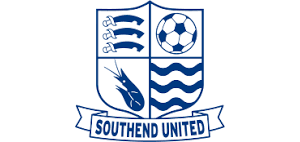Lovely day in London, including lunch on a Groupon deal, at Roux at Parliament Square. Absolutely gorgeous food - yummy!
-
Welcome to the ShrimperZone forums.
You are currently viewing our boards as a guest which only gives you limited access.
Existing Users:.
Please log-in using your existing username and password. If you have any problems, please see below.
New Users:
Join our free community now and gain access to post topics, communicate privately with other members, respond to polls, upload content and access many other special features. Registration is fast, simple and free. Click here to join.
Fans from other clubs
We welcome and appreciate supporters from other clubs who wish to engage in sensible discussion. Please feel free to join as above but understand that this is a moderated site and those who cannot play nicely will be quickly removed.
Assistance Required
For help with the registration process or accessing your account, please send a note using the Contact us link in the footer, please include your account name. We can then provide you with a new password and verification to get you on the site.
You are using an out of date browser. It may not display this or other websites correctly.
You should upgrade or use an alternative browser.
You should upgrade or use an alternative browser.
Question What is making you happy today?
MK Shrimper
Striker
Sat at my usual desk. The steely stare of shame worked like a treat :winking:
BrettieAngell
THE ROCK GOD
Found out today I'm getting the keys to my new flat next Friday, moving the week after. New start and all that!
Berrichonne shrimper
Members
Found out today I'm getting the keys to my new flat next Friday, moving the week after. New start and all that!
On your own?
BrettieAngell
THE ROCK GOD
On your own?
No, with a friend.
Pay day, finally! God, I know it's nice getting paid early in December but it makes January seem even longer than it actually is!
Uncle Leo
This cook is an anti-semite
This obituary of war hero Eric Garland. Behind The Times paywall, so I have copied and pasted it. Great read - what a man!
Commando who won Military Crosses at Dunkirk and in the Middle East before flying Spitfires and being shot down over Italy
As a decorated soldier who became a fighter pilot and was in action throughout the conflict with Nazi Germany, Eric Garland was a remarkable war hero by any standards. At 6ft with blue eyes and striking looks, he cut a dashing figure.
He won a Military Cross as an infantryman for “conspicuous bravery” in the retreat to Dunkirk in 1940 and was awarded another a year later as a commando who fought a sniper duel on the Litani river during the invasion of Syria. After transferring to Fighter Command, he baled out of a blazing Spitfire just south of Rome and suffered serious injuries before he was taken prisoner.
While his father was told by the Air Ministry that Garland was dead, his son escaped from a hospital train, fought alongside Italian partisans, and finally, wearing a straw hat, orange shirt and a policeman’s trousers, linked up with the American in the Po Valley in early 1945. For the third time, he was decorated.
“I certainly had a few near misses,” said Garland in one of the few interviews he ever gave. That was with Lord Ashcroft, the peer who purchased his medals for his private collection, last year on the 70th anniversary of the end of the Second World War. At the age of 95, Garland chuckled mischievously as he told the story of his war, giving “sighs of delight” as he recalled one scrape after another and explained how his parents finally found out that he was alive.
In a note written to his mother and father after his escape in Italy in 1944 and later forwarded by Captain JH Bevan, 8/22nd Battery, Royal Artillery, Garland wrote: “In case I have the misfortune to be recaptured I am writing this letter so that you will know my movements. An Italian is going to bury it in a bottle to give to an Allied soldier when they arrive . . . If you don’t hear from me for some time, don’t worry, I shall be giving the Jerries a pain in the neck wherever I am.”
Eric Francis Garland, the son of Sydney Garland, a director of a drinks company, and his wife, Florence, was born in 1920, the second of three children, and brought up among the stockbroker “Tudor” of Chipstead, Surrey. He was educated at the nearby Whitgift school in Croydon, a very competitive boy who excelled at boxing and rugby.
After leaving at 17, he joined Imperial Airways as a management trainee at Croydon airport. Unable to get into the RAF Volunteer Reserve at the time of the Munich Crisis in 1938, he joined the Territorial Army’s Artists’ Rifles. On the outbreak of war, he quit his job and was later commissioned into the 6th York and Lancaster Regiment. His elder brother, Norman, also joined the army.
Garland won his first MC at Dunkirk. He showed “conspicuous bravery” when he carried out a motorcycle reconnaissance on May 27 in the face of machinegun fire near Wormhoudt on the Franco-Belgian border, finding a route for his battalion transport to withdraw.
While passing through the Belgian town of Watou the next day, he was cited for bravery again during a German dive- bombing attack. When a bomb exploded in an ammunition dump, he entered the building and dragged one of the injured military police guards. He twice returned to help other wounded. “One of the men was so badly wounded, and in dreadful agony,” said Garland years later, “that I thought it would be humane to shoot him. I took his revolver out of his holster, and I was dithering about the ethics [of killing him], but fortunately he died.”
Not long afterwards, the young officer found himself crammed with 1,000 other soldiers aboard the Medway Queen, a river estuary paddle steamer transformed into a minesweeper. Once the favourite of Southend daytrippers, the Queen had become one of the stars of the evacuation — its gunners had already claimed three German aircraft — and was making its seventh and final trip. Once again, she was attacked, and one of her paddle wheels was damaged. Utterly exhausted, Garland was asleep, sprawled out on the deck, when the Medway Queen limped into Ramsgate.
For Garland’s parents, the joy of having a son back home was short-lived. His sister, Joan, was killed by a bomb that hit the family home at Chipstead during the Battle of Britain. She was 17.
Garland volunteered for the commandos. Yet almost a year would elapse before he next saw action and this time against troops controlled by the Vichy French authorities in Syria. After Hitler’s invasion of the Soviet Union in June 1941, Winston Churchill ordered Middle East Command to take over Lebanon and western Syria.
In June 1941, Garland was in one of three commando raiding parties that were due to be landed behind French lines north of the Litani river. Their task was to capture a bridge for Australian infantry entering Lebanon from Palestine.
Garland was put ashore just south of the river’s estuary, where their ranks were soon thinned by French snipers in a sand-bagged redoubt on the opposite bank. Garland and another officer — “cool as cucumbers,” according to his commanding officer, Major Geoffrey Keyes — led 30 commandos into bullrushes on the river’s south bank. According to the citation for the bar to his MC, Garland shot a sniper with a Bren gun by “deliberately exposing himself” and tempting him to give away his position.
When a massive explosion announced that the French had blown the bridge, four Australians crossed the same open ground carrying a small canvas assault boat. One was killed, but the others got their craft into the water and began ferrying the commandos across. Garland was the first over and began to use a long-handled wire cutter on the concertina entanglements. As he did so, his men covered him with a Bren gun.
Occasionally, Garland paused to use his own rifle to fire at the sandbagged position above him. “I couldn’t see a target, but we were trying to make as much noise as possible and give them the impression that they were the ones who were outnumbered,” Garland recalled in an interview with the author Colin Smith in 2008. The commandos discovered a 25mm anti-tank gun similar to a type Garland had once trained on. He assembled a scratch crew and, with seven shots, wiped out the remaining French gunners.
At this time, Garland was close to those men who would found the SAS, including Paddy Mayne, with whom he ran a card school that involved testing the nerves of players by shooting into the fireplace. Garland never blanched. Major Keyes wanted Garland to join him later in the year on a raid to assassinate the German general, Erwin Rommel, in north Africa. Garland was determined to become a fighter pilot. Keyes got a posthumous Victoria Cross.
He learnt to fly in Rhodesia, where he trained with Ian Smith, who would become prime minister of the country. But trouble tended to follow Garland. He was caught riding on the top of train, which was forced to stop, and trashed the officers’ mess playing rugby.
By the summer of 1943, he was flying Hurricanes in the Western Desert. A year later, he was at the controls of Mark 9 photo-reconnaissance Spitfires over Monte Cassino in Italy.
On May 4, low cloud forced him down to 2,000ft in range of German flak, which set his engine on fire and forced him to bale out. German soldiers helped him into the anti-burn gloves that were part of his RAF kit and gave him a cigarette. He was well-treated at a military hospital. He made three attempts to escape from his ward, once by sliding down a laundry chute. Each time he was recaptured.
In spite of burns to his hands and arms, and a serious leg wound, the authorities decided to send him to a prison camp. He asked an Italian doctor for a supply of medicines. “I wouldn’t do it if I were you,” came the reply.
Garland jumped from a hospital train, but, unable to walk and half starved, he was rescued by an Italian family who risked being shot to shelter him. Garland was appointed MBE (military division) for his escape and finished his war in an RAF hospital in Bath, receiving skin grafts for the wound in his left leg that troubled him for the rest of his life.
In 1951, he met Nadine Snelling, a former air hostess for British South American Airways at a party in Kenya, where he ran a cattle ranch. Two months later, they married. The couple had a son, Robert. Nadine died in 2003.
Two years later, he married Christine Fearon, a family friend who was widowed. She had two daughters, Nancy and Lizzie, who, as girls, would visit the Garlands and watch The Dukes of Hazard with Eric on Saturday afternoons. Nancy is a PA with an American company in London, while Lizzie works for a legal firm in Australia. Robert lives in Douglas.
Garland had resumed flying in the early 1950s as a member of the air wing of the British colony’s police reserve, which was helping to hunt down Mau Mau rebels. He then began flying for a living, first as a charter pilot then, after Kenyan independence, with East African Airways. He later flew in Britain for Air UK and moved to the Isle of Man, where he flew for Manx Airlines.
In retirement, he tended his large garden, took a science degree with the Open University and painted. He was always happy to have a drink.
Garland never considered that he was a brave man. “Once the war started,” he said, “I decided that I was prepared to risk my life — perhaps die — for King and country. I only survived the war through sheer luck although I guess, in a way, I thrived on a challenge.”
Eric Francis Garland, MC and Bar, MBE, soldier and airman, was born on February 2, 1920. He died on January 17, 2016, aged 95
Commando who won Military Crosses at Dunkirk and in the Middle East before flying Spitfires and being shot down over Italy
As a decorated soldier who became a fighter pilot and was in action throughout the conflict with Nazi Germany, Eric Garland was a remarkable war hero by any standards. At 6ft with blue eyes and striking looks, he cut a dashing figure.
He won a Military Cross as an infantryman for “conspicuous bravery” in the retreat to Dunkirk in 1940 and was awarded another a year later as a commando who fought a sniper duel on the Litani river during the invasion of Syria. After transferring to Fighter Command, he baled out of a blazing Spitfire just south of Rome and suffered serious injuries before he was taken prisoner.
While his father was told by the Air Ministry that Garland was dead, his son escaped from a hospital train, fought alongside Italian partisans, and finally, wearing a straw hat, orange shirt and a policeman’s trousers, linked up with the American in the Po Valley in early 1945. For the third time, he was decorated.
“I certainly had a few near misses,” said Garland in one of the few interviews he ever gave. That was with Lord Ashcroft, the peer who purchased his medals for his private collection, last year on the 70th anniversary of the end of the Second World War. At the age of 95, Garland chuckled mischievously as he told the story of his war, giving “sighs of delight” as he recalled one scrape after another and explained how his parents finally found out that he was alive.
In a note written to his mother and father after his escape in Italy in 1944 and later forwarded by Captain JH Bevan, 8/22nd Battery, Royal Artillery, Garland wrote: “In case I have the misfortune to be recaptured I am writing this letter so that you will know my movements. An Italian is going to bury it in a bottle to give to an Allied soldier when they arrive . . . If you don’t hear from me for some time, don’t worry, I shall be giving the Jerries a pain in the neck wherever I am.”
Eric Francis Garland, the son of Sydney Garland, a director of a drinks company, and his wife, Florence, was born in 1920, the second of three children, and brought up among the stockbroker “Tudor” of Chipstead, Surrey. He was educated at the nearby Whitgift school in Croydon, a very competitive boy who excelled at boxing and rugby.
After leaving at 17, he joined Imperial Airways as a management trainee at Croydon airport. Unable to get into the RAF Volunteer Reserve at the time of the Munich Crisis in 1938, he joined the Territorial Army’s Artists’ Rifles. On the outbreak of war, he quit his job and was later commissioned into the 6th York and Lancaster Regiment. His elder brother, Norman, also joined the army.
Garland won his first MC at Dunkirk. He showed “conspicuous bravery” when he carried out a motorcycle reconnaissance on May 27 in the face of machinegun fire near Wormhoudt on the Franco-Belgian border, finding a route for his battalion transport to withdraw.
While passing through the Belgian town of Watou the next day, he was cited for bravery again during a German dive- bombing attack. When a bomb exploded in an ammunition dump, he entered the building and dragged one of the injured military police guards. He twice returned to help other wounded. “One of the men was so badly wounded, and in dreadful agony,” said Garland years later, “that I thought it would be humane to shoot him. I took his revolver out of his holster, and I was dithering about the ethics [of killing him], but fortunately he died.”
Not long afterwards, the young officer found himself crammed with 1,000 other soldiers aboard the Medway Queen, a river estuary paddle steamer transformed into a minesweeper. Once the favourite of Southend daytrippers, the Queen had become one of the stars of the evacuation — its gunners had already claimed three German aircraft — and was making its seventh and final trip. Once again, she was attacked, and one of her paddle wheels was damaged. Utterly exhausted, Garland was asleep, sprawled out on the deck, when the Medway Queen limped into Ramsgate.
For Garland’s parents, the joy of having a son back home was short-lived. His sister, Joan, was killed by a bomb that hit the family home at Chipstead during the Battle of Britain. She was 17.
Garland volunteered for the commandos. Yet almost a year would elapse before he next saw action and this time against troops controlled by the Vichy French authorities in Syria. After Hitler’s invasion of the Soviet Union in June 1941, Winston Churchill ordered Middle East Command to take over Lebanon and western Syria.
In June 1941, Garland was in one of three commando raiding parties that were due to be landed behind French lines north of the Litani river. Their task was to capture a bridge for Australian infantry entering Lebanon from Palestine.
Garland was put ashore just south of the river’s estuary, where their ranks were soon thinned by French snipers in a sand-bagged redoubt on the opposite bank. Garland and another officer — “cool as cucumbers,” according to his commanding officer, Major Geoffrey Keyes — led 30 commandos into bullrushes on the river’s south bank. According to the citation for the bar to his MC, Garland shot a sniper with a Bren gun by “deliberately exposing himself” and tempting him to give away his position.
When a massive explosion announced that the French had blown the bridge, four Australians crossed the same open ground carrying a small canvas assault boat. One was killed, but the others got their craft into the water and began ferrying the commandos across. Garland was the first over and began to use a long-handled wire cutter on the concertina entanglements. As he did so, his men covered him with a Bren gun.
Occasionally, Garland paused to use his own rifle to fire at the sandbagged position above him. “I couldn’t see a target, but we were trying to make as much noise as possible and give them the impression that they were the ones who were outnumbered,” Garland recalled in an interview with the author Colin Smith in 2008. The commandos discovered a 25mm anti-tank gun similar to a type Garland had once trained on. He assembled a scratch crew and, with seven shots, wiped out the remaining French gunners.
At this time, Garland was close to those men who would found the SAS, including Paddy Mayne, with whom he ran a card school that involved testing the nerves of players by shooting into the fireplace. Garland never blanched. Major Keyes wanted Garland to join him later in the year on a raid to assassinate the German general, Erwin Rommel, in north Africa. Garland was determined to become a fighter pilot. Keyes got a posthumous Victoria Cross.
He learnt to fly in Rhodesia, where he trained with Ian Smith, who would become prime minister of the country. But trouble tended to follow Garland. He was caught riding on the top of train, which was forced to stop, and trashed the officers’ mess playing rugby.
By the summer of 1943, he was flying Hurricanes in the Western Desert. A year later, he was at the controls of Mark 9 photo-reconnaissance Spitfires over Monte Cassino in Italy.
On May 4, low cloud forced him down to 2,000ft in range of German flak, which set his engine on fire and forced him to bale out. German soldiers helped him into the anti-burn gloves that were part of his RAF kit and gave him a cigarette. He was well-treated at a military hospital. He made three attempts to escape from his ward, once by sliding down a laundry chute. Each time he was recaptured.
In spite of burns to his hands and arms, and a serious leg wound, the authorities decided to send him to a prison camp. He asked an Italian doctor for a supply of medicines. “I wouldn’t do it if I were you,” came the reply.
Garland jumped from a hospital train, but, unable to walk and half starved, he was rescued by an Italian family who risked being shot to shelter him. Garland was appointed MBE (military division) for his escape and finished his war in an RAF hospital in Bath, receiving skin grafts for the wound in his left leg that troubled him for the rest of his life.
In 1951, he met Nadine Snelling, a former air hostess for British South American Airways at a party in Kenya, where he ran a cattle ranch. Two months later, they married. The couple had a son, Robert. Nadine died in 2003.
Two years later, he married Christine Fearon, a family friend who was widowed. She had two daughters, Nancy and Lizzie, who, as girls, would visit the Garlands and watch The Dukes of Hazard with Eric on Saturday afternoons. Nancy is a PA with an American company in London, while Lizzie works for a legal firm in Australia. Robert lives in Douglas.
Garland had resumed flying in the early 1950s as a member of the air wing of the British colony’s police reserve, which was helping to hunt down Mau Mau rebels. He then began flying for a living, first as a charter pilot then, after Kenyan independence, with East African Airways. He later flew in Britain for Air UK and moved to the Isle of Man, where he flew for Manx Airlines.
In retirement, he tended his large garden, took a science degree with the Open University and painted. He was always happy to have a drink.
Garland never considered that he was a brave man. “Once the war started,” he said, “I decided that I was prepared to risk my life — perhaps die — for King and country. I only survived the war through sheer luck although I guess, in a way, I thrived on a challenge.”
Eric Francis Garland, MC and Bar, MBE, soldier and airman, was born on February 2, 1920. He died on January 17, 2016, aged 95
MK Shrimper
Striker
Got 20 grand of some girl off facebook
You too eh?
Napster
No ⭐
You too eh?
yeah, now working the netflix scam.
MK Shrimper
Striker
Napster. He's a little bit wayyyy, a little bit wooooo, a little bit dodgy.
Allegedly.
Allegedly.
Napster
No ⭐
Napster. He's a little bit wayyyy, a little bit wooooo, a little bit dodgy.
Allegedly.
I resemble that remark. (ps, want to buy a kid's SUFC top?)
MK Shrimper
Striker
I resemble that remark. (ps, want to buy a kid's SUFC top?)
I'll pass. :stunned:
Pubey
Guest
Going to the bierkeller in sheffield tonight. Payday drinks.
MK Shrimper
Striker
Both parents of murdered 4yr old Daniel Pelka's found dead in their prison cells. Happy Friday everyone!
Pubey
Guest
Both parents of murdered 4yr old Daniel Pelka's found dead in their prison cells. Happy Friday everyone!
The mother committed suicide last year I think.
Can't imagine anyone being sad about this, but personally I'd have liked them to have rotted in a cell for a very long time.
MK Shrimper
Striker
The mother committed suicide last year I think.
Can't imagine anyone being sad about this, but personally I'd have liked them to have rotted in a cell for a very long time.
Yep, "step father" found today. **** them, the world is a better place without them.
The mother committed suicide last year I think.
Can't imagine anyone being sad about this, but personally I'd have liked them to have rotted in a cell for a very long time.
But remember we would be paying to keep them rotting in there. I'm with MK glad they are dead absolute scum!
ShrimperZone - SUFC Player Sponsorship













